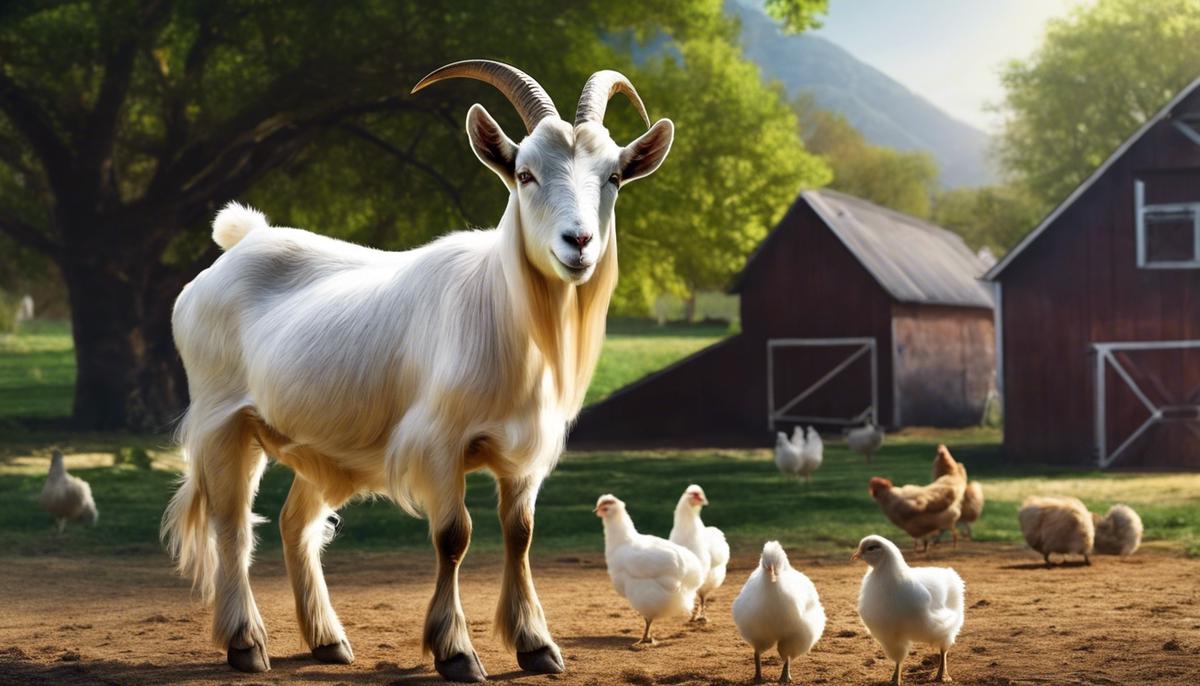

Agridisk
Egypt - Alexandria

Goat farming business plan, Cost and Profit
Description: Embarking on a journey to establish a successful goat farming enterprise requires not only a passion for agriculture but also a robust understanding of the intricacies of the market and the smart deployment of a strategic business model. In this increasingly health-conscious era, goat products are gaining traction, offering nutritious alternatives to traditional dairy and meat. This essay illuminates the path towards creating a thriving goat farming business by dissecting market trends, assessing demand, and customizing an approach to resonate with the evolving needs of consumers. By delving into the specifics of a well-structured business plan, we prepare to navigate the multifaceted landscape of goat farming, from its operational depths to its financial peaks, with a clear vision crafted for success. In the ever-evolving landscape of consumer demands and market trends, savvy entrepreneurs are now turning their gaze toward a rather unexpected but rapidly growing sector: Goat products. The market pulse on this niche is clear - what was once the humble purview of pastoral scenes is now a hotbed of innovation and profitability. First, let's address the milk market. Goat milk, positioned as both a gourmet alternative and a digestive-friendly option, is permeating the dairy shelves. Its nuanced flavor profiles are enticing specialty cheesemakers and artisanal ice cream brands, who in turn, are captivating discerning palettes keen on quality and novelty. With the health-conscious consumer in mind, the proliferation of goat milk-based yogurts, kefirs, and even protein powders is seeing exponential growth. Then there's meat. Goat meat, known as chevon, is no longer a delicacy just for the culinarily adventurous. Recognized for its lower fat content and sustainability quotient, it's carving out a significant space in the market. Ethically raised and pastured goat is resonating with consumers who crave transparency in their meat consumption without compromising on flavor. Let's not overlook the fiber market — cashmere and mohair. Luxury fashion is always on the prowl for the next big thing, and these fibers, with their unrivaled softness and warmth, are standing the test of time and trends. The apparel industry, well aware of the draw of sustainability and ethical production, is embracing goat fibers for their minimal environmental hoofprint. In the beauty industry, goat milk takes center stage once more, this time in the form of soaps, creams, and lotions. It's not just about the allure of all-natural skincare; the purported benefits of goat milk in beauty products include enhanced moisturizing qualities and support for a healthy skin microbiome, making it a strong seller in the personal care arena. Forward-thinking entrepreneurs are also capitalizing on the exponentially growing pet industry by introducing goat-based pet foods. Distinctly rich in nutrients and gentle on the stomach, goat meat is sculpting a new frontier in pet nutrition. High-quality and premium branded goat meat pet foods are seducing pet owners who want the very best for their furry friends. What’s the bottom line? Riding the wave of 'goat fever' isn't for the faint-hearted. It requires a keen understanding of changing consumer preferences, cultural dietary nuances, and the ability to pivot with agility and innovation. For those ready to harness the dynamic potential of the goat economy, the rewards are ample. With a finger firmly on the market pulse, trailblazing entrepreneurs have the opportunity to transform the rustic image of goat products into an emblem of modern, sophisticated consumption. The goat products market is a promising field ripe with opportunity; the question is, who's ready to lead the herd? Unlocking Profits from Goat Farming: Diversification and Sustainable Practices as Key Drivers of Success Venture onto the fertile grounds of goat farming and discover a world brimming with untapped profit potential. As a dynamic entrepreneur, one recognizes that diversification is not merely a buzzword in the agribusiness sector; it's the cornerstone of a thriving operation. Thus, unravel how to steer a goat farm toward a lucrative future by exploring avenues beyond the primary products, emphasizing sustainable practices, and penetrating niche markets with a strategic mindset. At the core lies the importance of diversification within a goat farm's revenue streams. While gourmet products are captivating the market, dig deeper. Consider the production of goat cheese, renowned for its rich texture and varied flavors, ranging from mild to sharp. Artisanal goat cheeses can command premium prices, particularly when coupled with farm-to-table narratives that resonate with ethical consumers. There’s a burgeoning sector awaiting those who tailor their offerings to health-conscious epicureans. Moreover, shift attention to experiential agriculture. Agritourism, that is, throwing open the barn doors and inviting the public in, can significantly broaden a goat farm’s horizons. From petting zoos that charm families to cheese-making workshops for the gastronomically adventurous, experiences translate into additional revenue and enhanced brand visibility. Zeroing in on sustainability can carve a distinctive niche in the marketplace while slashing costs. Implementing energy-efficient practices, from solar-powered fencing to water-saving irrigation systems for pasture management, isn’t only good for the planet – it's economically savvy. Organic goat farming attracts a premium customer base willing to invest in ethically produced goods. By advertising a commitment to sustainability, capitalize on the growing segment of consumers who prioritize environmentally responsible brands. Never overlook the power of a robust online presence in today’s digital marketplace. A savvy entrepreneur embraces e-commerce platforms and social media to reach broader audiences. Sharing the story of the farm, the goats, and the caretakers behind the brand cultivates community and customer loyalty. By building an online storefront, reach gourmet food enthusiasts, ethical shoppers, and health-conscious individuals beyond local markets. Last but not least, forging partnerships with local businesses can fortify a goat farm’s footing in the economy. Cross-promotional opportunities with restaurants, health food stores, and local artisans not only widen distribution channels but also embed the brand within the community fabric. Elevate a goat farm from a mere agricultural endeavor to a profitable, multifaceted business with keen entrepreneurial strategies. Goats are not just animals; they are the gateway to a business empire rich with diversity, sustainability, and innovation. The era of goat farming as a simple pastoral pursuit is over. Step into the future where it emerges as a smart investment for the astute entrepreneur who dares to redefine profitability within the agribusiness landscape. As we move beyond the basics of goat-derived products and their rising influence across various sectors, it's pertinent to delve into the financial forecast and funding strategies that will underpin this burgeoning industry's growth trajectory. The financial outlook for the goat industry remains robust, with predictions of continued expansion as consumer trends lean towards healthier, sustainable, and ethically produced goods. Capitalizing on the growing market demands means exploring diverse revenue streams beyond traditional farming. The production of goat cheese is one such avenue that promises considerable returns. Artisanal and specialty cheeses command a premium in the market, offering producers significant margin opportunities. Financing these ventures will often entail a mix of traditional loans, agricultural grants, and potentially venture capital, especially for disruptive business models aiming to transform the cheese industry. Another undertapped resource is agritourism. Farms that pivot towards this trend not only stand to benefit from direct income streams but also from an increase in brand visibility and consumer education. Agritourism invites partnerships with hospitality and travel industries and may attract a different genre of funding such as tourism grants and partnership deals. A fundamental strategy within the goat product marketplace is the incorporation of sustainable farming practices. The environmental narrative is not just about compliance; it's a marketing goldmine. Investors are increasingly attracted to sustainable ventures, underscoring the potential for green bonds and impact investment funds to play a significant role in funding these initiatives. In terms of market reach and customer engagement, e-commerce and social media are powerhouses that cannot be overlooked. The ability to directly connect with end-users and rapidly respond to market trends positions online sales channels as integral components of the contemporary revenue model. Crowdfunding platforms present novel funding avenues here, enabling direct consumer investment in promising goat-based product lines and market innovations. Forming strategic partnerships with local businesses is a win-win tactic. Not only do these collaborations extend distribution networks, but they also ground the brand in local communities, fostering loyalty and sustained demand. Leveraging local business loans, and regional development funds can support these collaborative efforts and ensure a symbiotic relationship that benefits both the farms and their commercial partners. In conclusion, the horizon appears financially promising for the goat industry. The key lies in constructing a multi-faceted approach that blends product diversification with shrewd financial navigation. By tapping into a mix of funding streams - from the traditional to the innovative, and harnessing strategic partnerships, savvy entrepreneurs are poised to redefine the landscape of goat-related goods. Progress in this industry will not just be measured in the breadth of products offered but also in the depth of the market’s financial frameworks that underpin its future growth and sustainability. The goat industry, burgeoning with opportunities, is not without its share of risks and regulations—a complex maze entrepreneurs must navigate deftly to capitalize on the untapped potential of goat-derived commodities. The rule of the game is not just to innovate but to innovate within the bounds of existing frameworks and market realities. For starters, understanding local and federal regulations is non-negotiable. The USDA and FDA govern the food and cosmetic spaces with an iron hand, setting stringent guidelines for the safety and marketing of goat milk and meat products. Mastery of these regulations is paramount in preventing costly recalls or legal missteps, which can derail even the most visionary ventures. In cosmetics, entrepreneurs need to substantiate claims about the benefits of goat milk for skin health before unleashing their products. Adherence to the Fair Packaging and Labeling Act ensures transparency and ethical marketing, while certification from organizations like Leaping Bunny can lend credibility in a competitive beauty market. Moving on to cheese production, which is indeed lucrative, but safety is chief. Compliance with the Pasteurized Milk Ordinance (PMO) and state-specific dairy laws is quintessential. Initiatives seeking to promote raw goat cheese must prioritize consumer safety to foster trust and longevity. Compliance with environmental regulations holds the key to sustainability. Navigating the EPA’s guidelines and local environmental regulations is as much about protecting the planet as it is about forging a brand that resonates with the eco-conscious populace. Moreover, embracing food safety management systems such as HACCP can not only streamline operations but also serve as a badge of honor—an assurance of quality that is laudable in the eyes of discerning consumers. Insurance, typically overlooked, is a critical pillar of risk management. From general liability to product liability insurance, a proper coverage blanket shields against unforeseen events that can range from product liability to on-farm agritourism accidents. To navigate the financial landscapes, astute entrepreneurs must familiarize themselves with the nuances of the Farm Bill, which often contains provisions and grants supporting agricultural diversity and innovation, including goat-related endeavors. Further, understanding import-export regulations cannot be understated, as it enables a stronghold in international markets—vital for brands looking to transcend boundaries. Entrepreneurs must become well-versed with tariffs, trade agreements, and export restrictions that can make or break their overseas ambitions. Last but not least, compliance with labor laws is essential. This ensures that an enterprise not only enjoys the fruits of a productive workforce but also underscores its commitment to social responsibility—a trait that modern consumers value immensely. In conclusion, the journey to navigating risks and regulations within the goat industry need not be an odyssey. With the right compliance strategy, informed decision-making, and a proactive stance on legal and ethical standards, entrepreneurs can steer their goat product ventures to safe harbors of prosperity, setting a benchmark for the industry at large. Therein lies the thrum of progress—the heart of entrepreneurial success. Capitalizing on Specialty Goat Dairy Products and Expanding the Business Footprint In today's innovative agricultural landscape, identifying niche markets and delivering specialized products have become a cornerstone of success. Goat dairy entrepreneurs must look beyond the comfort zones of traditional herding and milk production to tap into consumer trends and demands that require a rare blend of expertise and resourcefulness. The upcoming powerhouse in goat dairy production is the specialty sector—artisanal cheeses, exclusive butters, goat whey for health supplements, and fermented goat beverages, to name just a few. Establishing a product line that caters to artisanal and health-conscious markets can differentiate your brand in an otherwise homogenized field. Dairy technology improvements stand as another avenue ripe for investment. The growth in biotech and smart farming tools provides an opportunity to enhance production efficiency and traceability. By leveraging advancements such as precision dairy farming, farmers can monitor animal health, optimize milk output, and transform data into actionable business insights. Marketing and branding prowess is also indispensable. Understanding the psychology of consumer decision-making, coupled with robust storytelling around the pastoral charm and health benefits of goat products, can catapult a farm's products into the consumer consciousness. Engaging in direct-to-consumer sales through farm shares or community-supported agriculture (CSA) can also bolster the farm’s profile and generate stable income streams. Furthermore, strategic expansion into niche markets, such as halal and kosher food segments, can cater to cultural dietary requirements and open up new revenue in untapped demographics. Formulating products for health-specific diets, like those requiring low-lactose dairy options, can also secure a dedicated customer base. Product innovation is relentless in the goat dairy sphere—research and development into lactose-free goat milk or fortified products with vitamins and minerals could fill market gaps and meet specific nutritional needs. Exploring the possibilities in processing byproducts into biofuels or fertilizers can also position a goat farm as an eco-innovative hub, redefining waste as a resource and streamlining operations. Enhancing farm visibility through media and public relations efforts is also paramount. A documented visit from a celebrity chef or a feature in a gourmet magazine does wonders in broadcasting the brand and educating the public on the superior qualities of goat products. Lastly, alliances with research institutions for product development and with culinary institutions for recipe innovation can forge a beating path of relevance and authority in the market. Collaborative ventures with tech start-ups can introduce breakthrough technologies, such as blockchain for supply chain transparency or AI for predictive analytics in herd management. The goat farming business is on the precipice of extraordinary possibilities. By harnessing the power of innovation, technology, and strategic market positioning, these businesses stand to redefine themselves as leaders in a rapidly evolving, forward-thinking industry. The lure of success beckons those willing to embrace change, meet adversity with ingenuity, and manifest a deep-rooted vision into tangible, lucrative realities. Understanding the goat farming business plan is akin to charting a course through treacherous yet rewarding terrain. Armed with detailed market analysis, a solid business strategy, comprehensive financial projections, a keen eye for risk management, and dynamic marketing tactics, aspiring entrepreneurs are poised to transform the fertile ground of opportunity into a bountiful enterprise. As we consider the intricate tapestry of necessary components for a flourishing farm, it’s evident that success is not just about the superior quality of goat products but also the astuteness of the business acumen behind them. With dedication and strategic planning, the envisaged goat farming business is capable of not only meeting market demands but also of establishing new benchmarks in the realm of agricultural entrepreneurship. Goat farming, an integral part of the global agriculture industry, presents a multitude of opportunities for both seasoned and novice entrepreneurs. Understanding the intricacies of this lucrative industry is vital, including the types of goats, their various uses, and components of essential care. We will delve into the associated costs of starting a goat farm, revealing how factors such as land prices, animal costs, and operational expenditures influence the initial and ongoing investment. To ensure a comprehensive overview, we will explore potential revenue streams that extend beyond the traditional meat and milk sales, showcasing how diverse the industry truly is. Additionally, a detailed SWOT analysis will present industry strengths, weaknesses, opportunities, and threats, aiding in informed decision making. The landscape of goat farming continues to evolve with innovative practices, technological advancements, and consumer-driven trends influencing growth, therefore knowledge in these areas is pivotal. In today's fast-paced and ever-changing world, it's critical to maintain an innovative outlook on even the most traditional sectors. Take, for instance, the goat farming industry - a field that is ripe for reinvention, but still largely retains its old-school ways. Through a business-savvy lens, goat farming can be much more than just the production of meat or dairy. There's a wealth of untapped opportunity in this picturesque landscape, patiently awaiting the entrepreneurial architect to lay down a more efficient structure. At a basic level, goat farming is not much different from other agricultural endeavors: it involves breeding, nourishing, and looking after a flock of goats for their products - namely, their meat and milk. Goat dairy is distinctive in taste and offers a broad array of cheeses, yogurts and even ice creams. There's also a strong appreciation for the premium, lean goat meat that is often undervalued in many Western countries. On a global scale, people eat more goat meat than beef, poultry, or pork. And let’s not forget about goat hair and its application in premium textiles. These products feed into a supply chain directly linked to our food system, our fashion industry, and even our beauty sectors. Underneath the cover of simplicity, goat farming serves a massive, diverse marketplace. What if, we, the forward-thinkers and innovators, took a more layered approach to goat farming? What might that look like and how could it reshape this million-dollar industry? To start, one can observe the potential for niche markets. As consumers grow more conscious of their health and their environmental impact, we see a surge of interest in organic, local, and sustainable produce. Goat farms can cater to this growing demand—providing fresh goat cheese, milk, and meat with appealing narratives spun out of eco-friendly and animal-welfare-friendly practices. Next, consider this: goat farming is relatively start-up friendly. This industry needs less capital input and land, and goats are quite hardy and adaptable to varying climatic conditions. Additionally, goats multiply rapidly, creating a faster return on investment. And then, there's the potential therapeutic impact of goat farming. Utilizing the naturally friendly nature and compact size of goats, farms could expand their reach to offer therapy and wellness programs. Ever heard of goat yoga? It’s a thing. Finally, tech has yet to lay down its hard roots in this industry. There's ample room to drive efficiencies using IoT, AI, and blockchain—all aimed at optimizing herd management, streamlining inventory, and ensuring traceability. Picture a goat farm powered by apps tracking nutritional intake, growth, health, and more. Sounds futuristic, right? Well, it's within reach. Goat farming is more than just an agricultural practice. It's a palette of opportunities just waiting to be painted on by the next wave of innovators — those willing to look beyond the ordinary, beyond the tried-and-true. It's time to awaken to the vibrant opportunities, the strong markets, and the transformative potential of this unique industry. Have you considered the goat farming revolution yet? Starting a goat farming business is not for the faint-hearted, nor it is for the underprepared. It is an adventure fueled by business acumen, pragmatism, foresight, and, yes, even a dash of receptiveness to the whims of these unique, often charming, creatures. And delving into the core of what it takes, specifically, the initial and continuing costs, is an essential step in kick-starting this venture. Firstly, the land is a primary expenditure. Do you have acreage available or do you need to acquire it? Factors such as location, topography, and accessibility significantly affect the cost. On average, farm real estate runs about $3000 per acre, but this can be considerably more in certain areas. Furthermore, fences, sheds, barns, and other forms of infrastructure come at a relatively high one-off cost that needs to be factored into your startup budget. The cost of purchasing the goats themselves is the next on the list. The price can vary wildly based on breed, age, health, and pedigree. For instance, the popular breed Boer goats, recognized for their meat, can cost anything from $60 to $500 each. Pair this with various startup costs including feed, vaccinations, and other veterinary expenses, and your costs start to add up. Yet, the buck does not stop at initial investment. Recurring expenses are an integral part of the operation, ensuring the smooth running of your goat farming business. Food is the mainstay, with alfalfa hay and grain feed being necessary for optimal health of your livestock. Additionally, regular veterinary care is essential. Be it routine check-ups, vaccinations, or dealing with health issues, the services of a veterinary physician are indispensable. To successfully navigate this aspect, building relationships with trustworthy and competent professionals is of the essence. Ongoing investment in technology should also not be overlooked. The success of a mentally and physically sound herd is inherently tied to management software and tracking systems for inventory and traceability, all of which have attached costs, but also parallel benefits. Last, yet not the least, marketing your products – be it meat, milk, or hair – incurs ongoing costs. Whether advertising locally or reaching out to a broader, gourmet market, the capacity to communicate your brand values and benefits effectively is an expense worth considering. In conclusion, while the upfront and ongoing expense of a goat farming business can seem overwhelming, the return on investment can be equally significant. With strategic planning, diligent execution, and a smattering of creativity, there lies a potential for turning a substantial profit. Beyond that, you may even reshape the landscape of eco-friendly and sustainable agriculture. Remember: Successful business ventures demand a firm grasp of the financial dynamics. Goat farming is no exception. The challenge lies not just in embracing the opportunity, but in the ability to harness it to the fullest, making money while you make a difference. Do you have what it takes? Diving further into the potential revenue streams of the goat farming industry reveals a plethora of opportunities, further cementing the lucrative promise this burgeoning sector holds. Beyond the direct yield of products such as milk, meat, and hair, a smart entrepreneur always keeps an eye out for innovative means to capture the market. A good case in point is the packaging and processing of goat milk, which can be converted into cheese and butter or specialty dairy products that hold a high demand in niche markets. Novel cheese blends, gourmet butter, and a range of organic, aesthetically packaged dairy products can draw a premium price, opening up a steady stream of revenue. It doesn't stop at dairy processing. There's also the potential of delving into the canning and freezing of goat meat. Processed meat, when executed in a way that ensures product quality and safety, can be another lucrative market segment where entrepreneurs can make their mark. The beauty of goat farming is that almost nothing goes to waste. Consider, for instance, the goat hide and fur. These can be processed into rugs, clothing accessories, and other crafts that appeal to the conscious consumer looking for sustainable, ethical fashion. This in itself can potentially develop into a micro-enterprise that complements the main farming business. Breeding goats for commercial sale is another smart business move in the goat farming sphere. Purchasing goats in their prime, breeding them and selling offspring can generate significant returns. Quality control in this segment is key, as breed, health, and age factor into potential earnings. Then there’s fecal matter, typically perceived as waste, which can be composted and sold as organic fertilizer. With an increasingly aware and environmentally conscious population, organic fertilizers are gaining a strong foothold in markets. The expansive realm of possibilities that goat farming brings can also extend to giving farming tours, teaching classes on sustainability, or even hosting farm-to-table dining experiences. Last but not least, it's not just about revenue generation. Entrepreneurs should view every potential cost as an investment. From land acquisition to infrastructure setup, each aspect that demands capital also has the potential to offer a substantial return if managed wisely. Efficient farm management and smart marketing can be key game changers in this dynamic domain. The future of the goat farming business appears promising and innovative technopreneurial interventions can further integrate efficiency into this domain. As with all business, the entrepreneur who keeps his pulse on the current trends, thinks out of the box, and adopts sustainable practices is the one who will ultimately hit the jackpot in this evolving landscape of goat farming. As we delve deeper into the intricacies of the goat farming business, it's crucial that the clear-eyed entrepreneur discerns the underpinnings of the enterprise - a classic SWOT analysis. That is, understanding the Strengths, Weaknesses, Opportunities, and Threats inherent to the industry. By breaking down these elements, one identifies key areas of focus to transform latent potential into tangible profit. As already noted, the adaptability and relative low maintenance of goats make them excellent stock for a diversified farm. Parallel to this, the multiplicity of viable products - from meat, milk, and hair to environmental services such as weed control, makes this venture attractive. Moreover, customer interest in artisanal products, sustainable farming, and niche markets offer the savvy entrepreneur considerable scope for differentiation and higher margins. Furthermore, the low barrier to entry in the goat farming sector, the speed of scaling, and the possibility of leveraging technology to streamline operations brings agility and efficiency into the equation. Nonetheless, every venture bears its own set of challenges. With goat farming, overcoming the initial learning curve is critical. Comprehending the goats' care, mating cycles, veterinary needs, and feeding routines necessitate time and dedication. Moreover, the physicality of the work and the potential irregularity of working hours means this isn't an endeavor for the faint-hearted. Additionally, managing the fiscal aspects of a farming business is no small feat. Balancing overheads, anticipating returns, and cushioning unforeseen expenditures requires strong financial acumen. That being said, the goat farming industry is ripe with opportunities. The growing recognition of goat products' nutritional benefits will only augment their demand. A shift towards more organic and sustainable consumption patterns underpin an upward trajectory for goat farming. Furthermore, versatile by-products like organic fertilizers provide the chance for offshoot revenue streams. Finally, one must confront a reality: farming, like any industry, is not immune to threats. Variability in the prices of feed and other inputs, potential disease outbreaks, fluctuating market demand, or adverse climatic conditions can impact profitability. Also, strict regulations surrounding agricultural practices, health and safety, and environmental standards add layers of complexity. In the grand scheme of things, the business-savvy entrepreneur thrives on uncertainty, turning roadblocks into stepping stones. Goat farming is an industry abundant with opportunities, ripe for the passionate professional to innovate, harnessing the full potential of this progressively lucrative sector. As the business landscape shifts, adaptability becomes the differentiator between the sluggishly conventional and deftly innovative business entities. In summary, the key to thriving in the goat farming sector is adaptability. It is understanding constraints not as limitations but as catalysts for innovation. It is not just about farming goats; it's about harnessing a mindset of resilience, creativity, and infinite potential - the true hallmark of entrepreneurial spirit. Harnessing the Power of Social Media in Goat Farming Drive through any farming community, and you'll likely see an increasing number of homes displaying chalkboard signs advertising 'fresh goat cheese,' 'organic goat milk,' or 'grass-fed goat meat!' While this is a heartening sight for the burgeoning goat farming industry, the real revolution is occurring unseen – in the digital sphere of social media. Social media platforms like Facebook, Instagram, LinkedIn, and Twitter have proven to be valuable tools for businesses. For goat farming, this translates into a unique opportunity for promoting services, products, and creating a brand narrative that resonates with customers’ preferences for organic and sustainably sourced foods. Posting captivating pictures or videos of goats grazing in organic meadows, sharing engaging stories about the benefits of goat milk, or even providing perspective about the farmer’s challenges and triumphs, creates an emotional connection with potential consumers. This connectivity not only shapes a positive perspective towards the brand but paves the way for direct consumer engagement - a vital aspect considering the current demand for transparency in food sourcing. The Role of Analytical Insights As digitally-savvy entrepreneurs would advise, being present on social media is just the tip of the iceberg. Effectively using the analytics provided by these platforms is key to driving growth and engagement. These insights can reveal valuable information about your target audience - their demographics, interests, online behaviors, and prime engagement time. For example, knowing that your audience is mostly urban millennials with an interest in healthy lifestyle choices could shape your marketing strategy. You might promote benefits such as the lower fat content of goat meat compared to beef, or the probiotic qualities of fermented goat milk products. Moreover, these insights can help assess the performance of your content, allowing alterations and improvements based on what generates the greatest engagement. This continuous cycle of analyzing and adjusting is crucial in navigating the dynamic digital market landscape. Ecommerce: An Emerging Sales Channe As the trend of online shopping continues to rocket upwards, establishing an e-commerce platform for goat farming products becomes an avenue worth exploring. These platforms can shorten the consumer's trip from discovery to purchase of your products, thus streamlining your sales process. Alongside offering products, Ecommerce can also provide all of the necessary details about the products, such as the farming method, breed of goat, pricing, and delivery options. This transparency empowers consumers, which in turn can foster loyalty towards your brand. While the ecommerce sector is rife with competition, goat farming holds a unique position. As a niche market, your products can stand out amidst the usual supermarket offerings, thus grabbing the attention of consumers looking for unique, premium quality, and sustainably produced foods. Beyond these digital approaches, it's a good idea to stay abreast of emerging trends and technologies in the broader agricultural sector. Whether it's new breeds, innovative feed options, or breakthrough farm management tech, these elements can ultimately factor into the success and sustainability of your goat farming venture. Taken together, these strategies capitalise on the burgeoning potential of goat farming, promote an emphasis on sustainable agriculture, and reveal the transformative impact that digital trends can bring about in the agrarian world. As such, they embody the genius behind the entrepreneurial mindset in goat farming: adaptability, innovation, resilience, and unlimited potential for growth. As we navigated through the cost and profit aspects of goat farming, the multi-faceted nature of the industry became evident. The contemporary farmer is no longer just a shepherd, but an adept entrepreneur who efficiently manages resources, capitalizes on multiple revenue streams, and aligns with industry trends to drive profitability. With a firm understanding of the internal and external factors at play, prospective goat farmers can find their footing in this promising sector. The industry, heavily influenced by technological innovations, sustainability practices, and changing consumer preferences, demands constant adaptation, but with this comes even bigger rewards. Indeed, goat farming presents an exciting blend of tradition and innovation, a fertile ground for entrepreneurial growth and success.Goat farming business plan, Cost and Profit
Goat farming business plan
Market Analysis and Demand
Tapping into the Booming Goat Economy: A Lucrative Venture Awaits

Business Model & Strategy
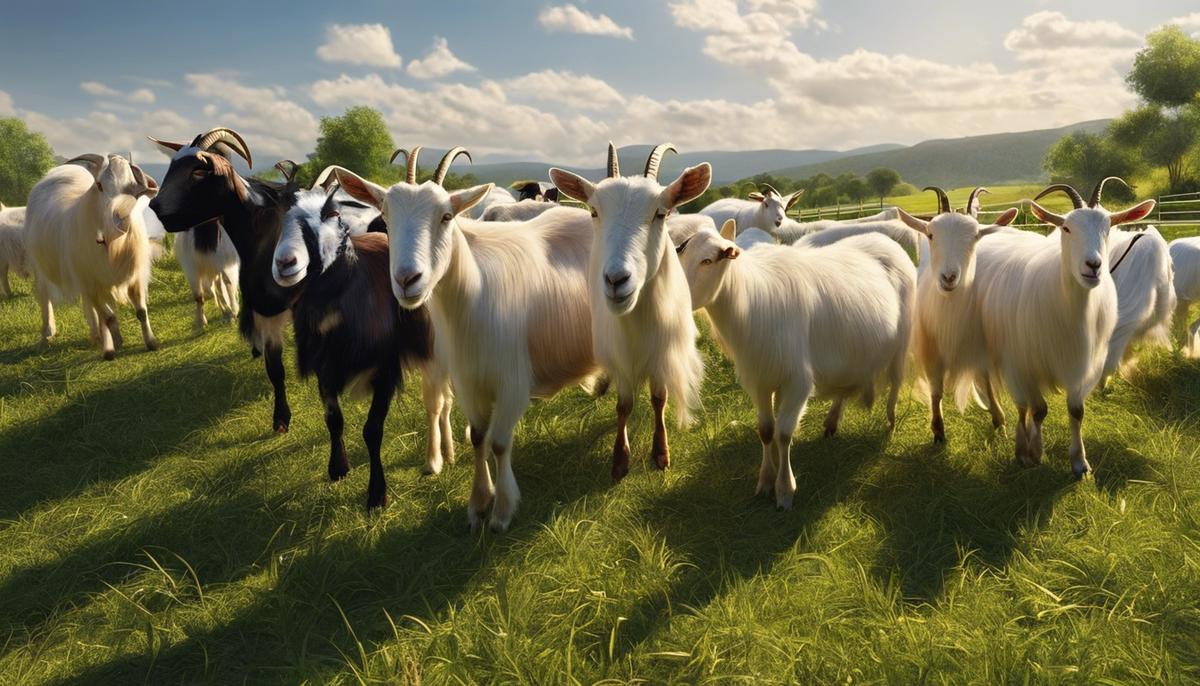
Financial Projections and Funding
Navigating the Financial Future of the Goat Industry - Strategies and Perspectives
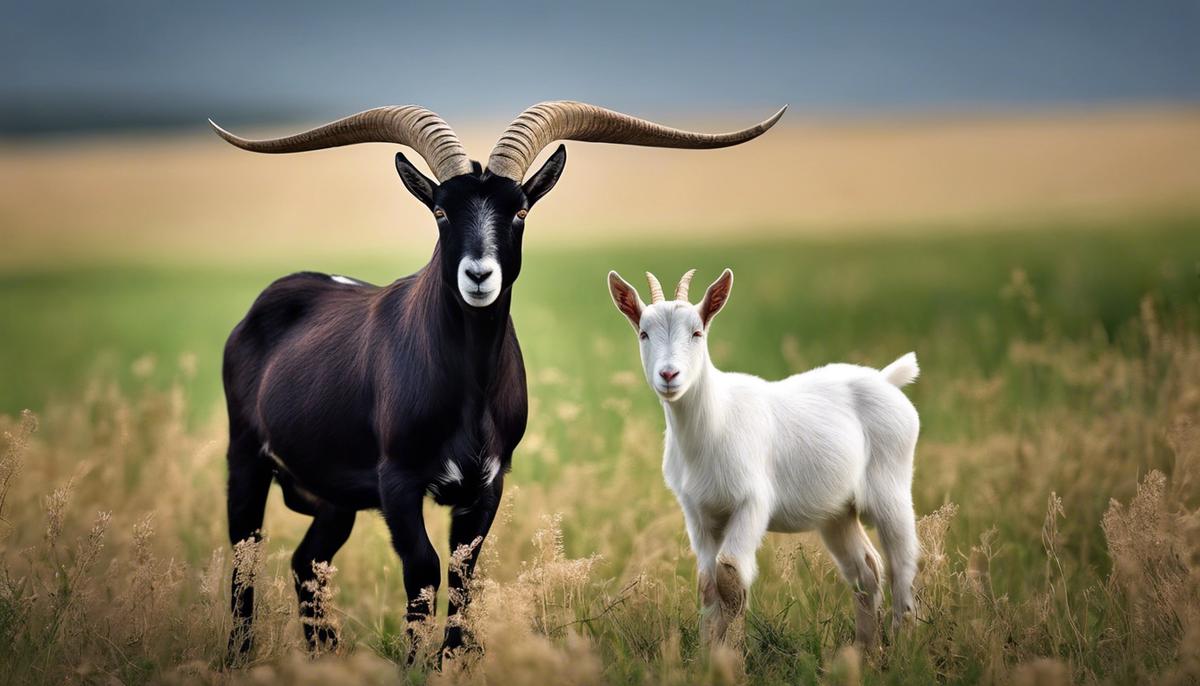
Risk Management and Compliance
Mastering the Regulatory Gauntlet in the Burgeoning Goat Product Space

Marketing and Sales Strategies

Goat Farming Cost and Profit
Understanding Goat Farming
Revolutionizing Goat Farming: A Transformative Approach to a Traditional Industry
Understanding Goat Farming Today
Unveiling the Charismatic Potential of Goat Farming
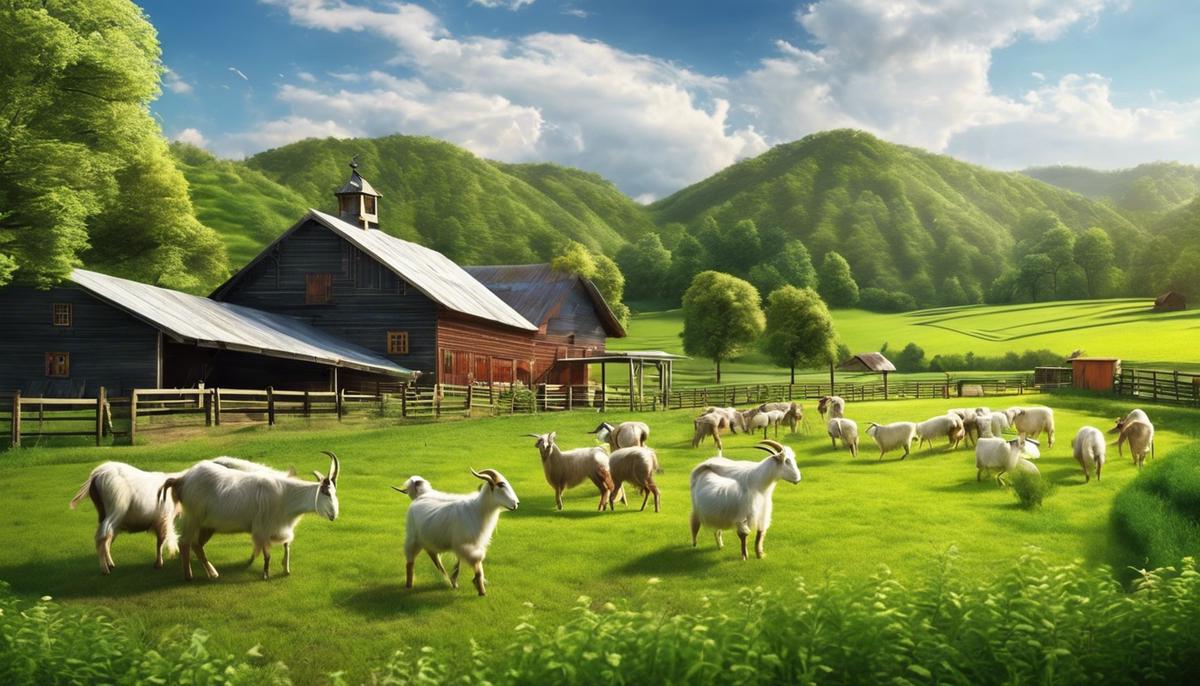
Starting a Goat Farm: Costs Involved
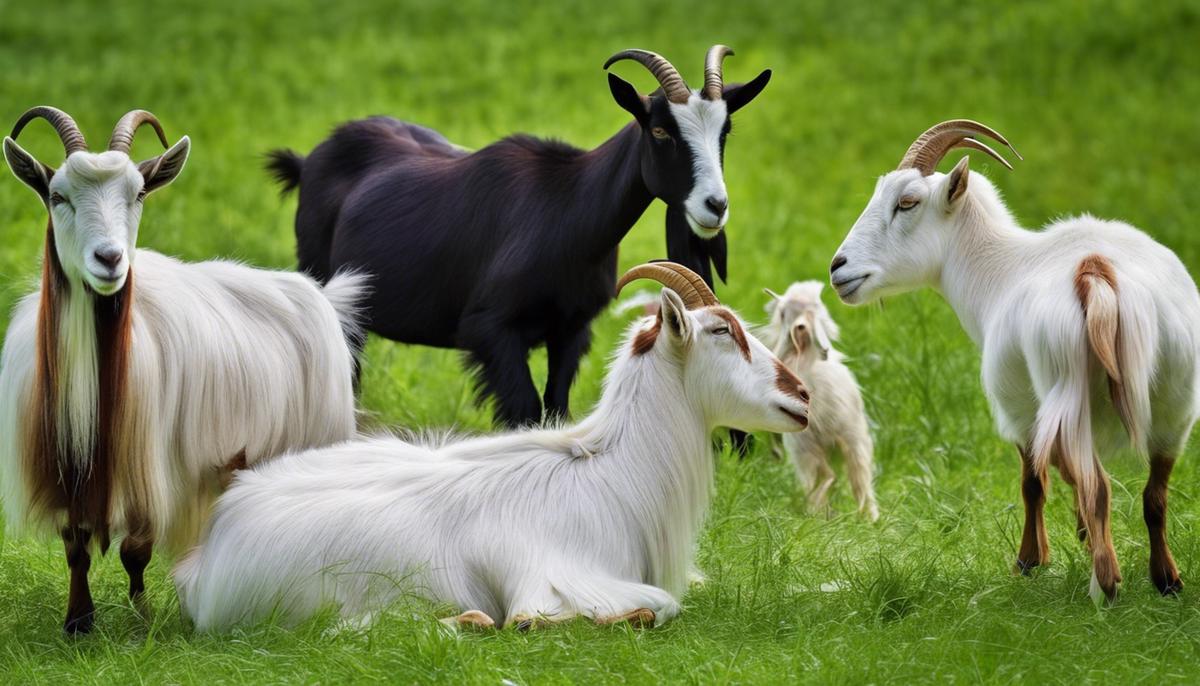
Revenue Streams in Goat Farming

SWOT Analysis of Goat Farming Business
Strengths:
Weaknesses:
Opportunities:
Threats:
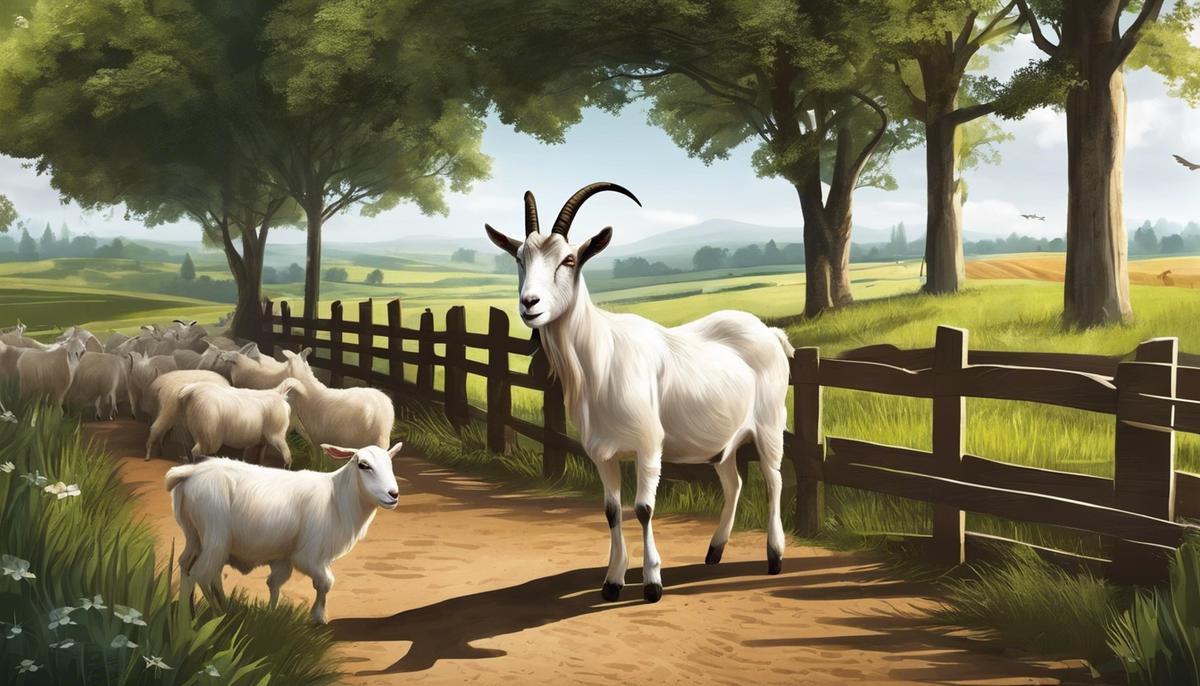
Innovations and Trends in Goat Farming
